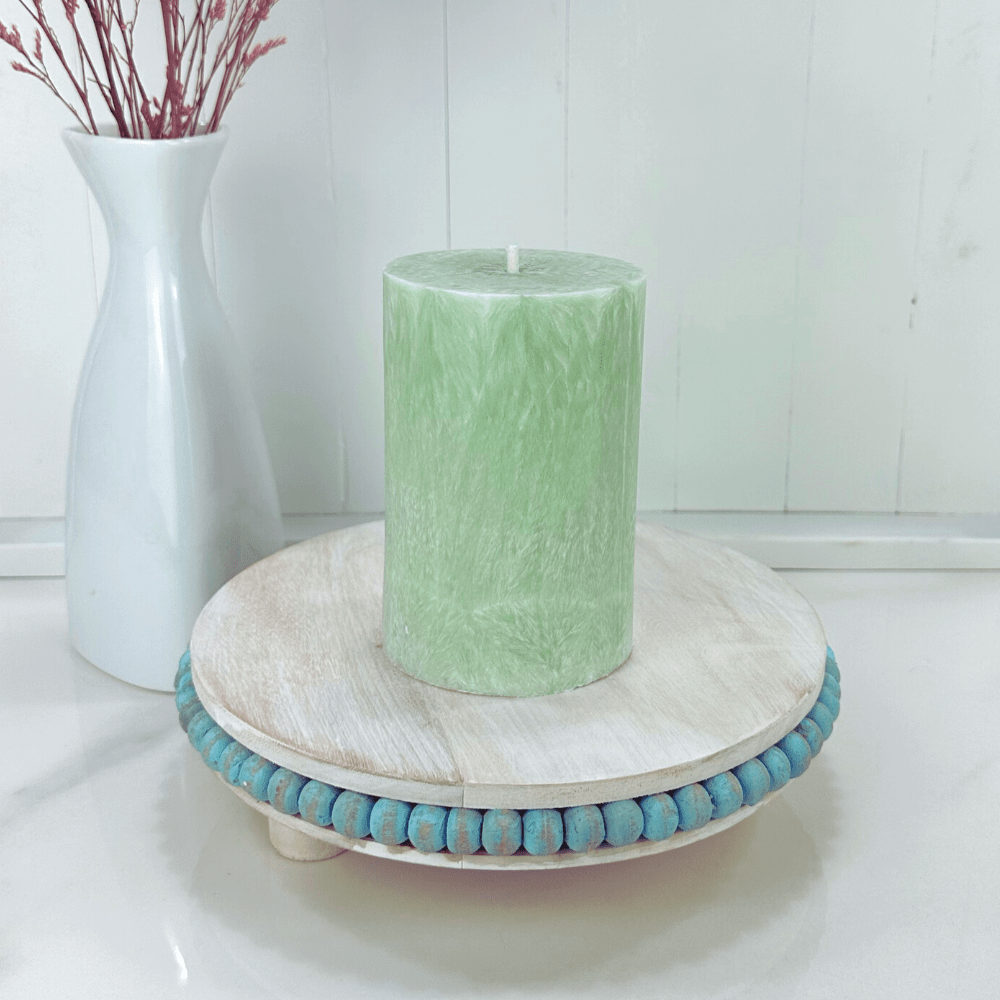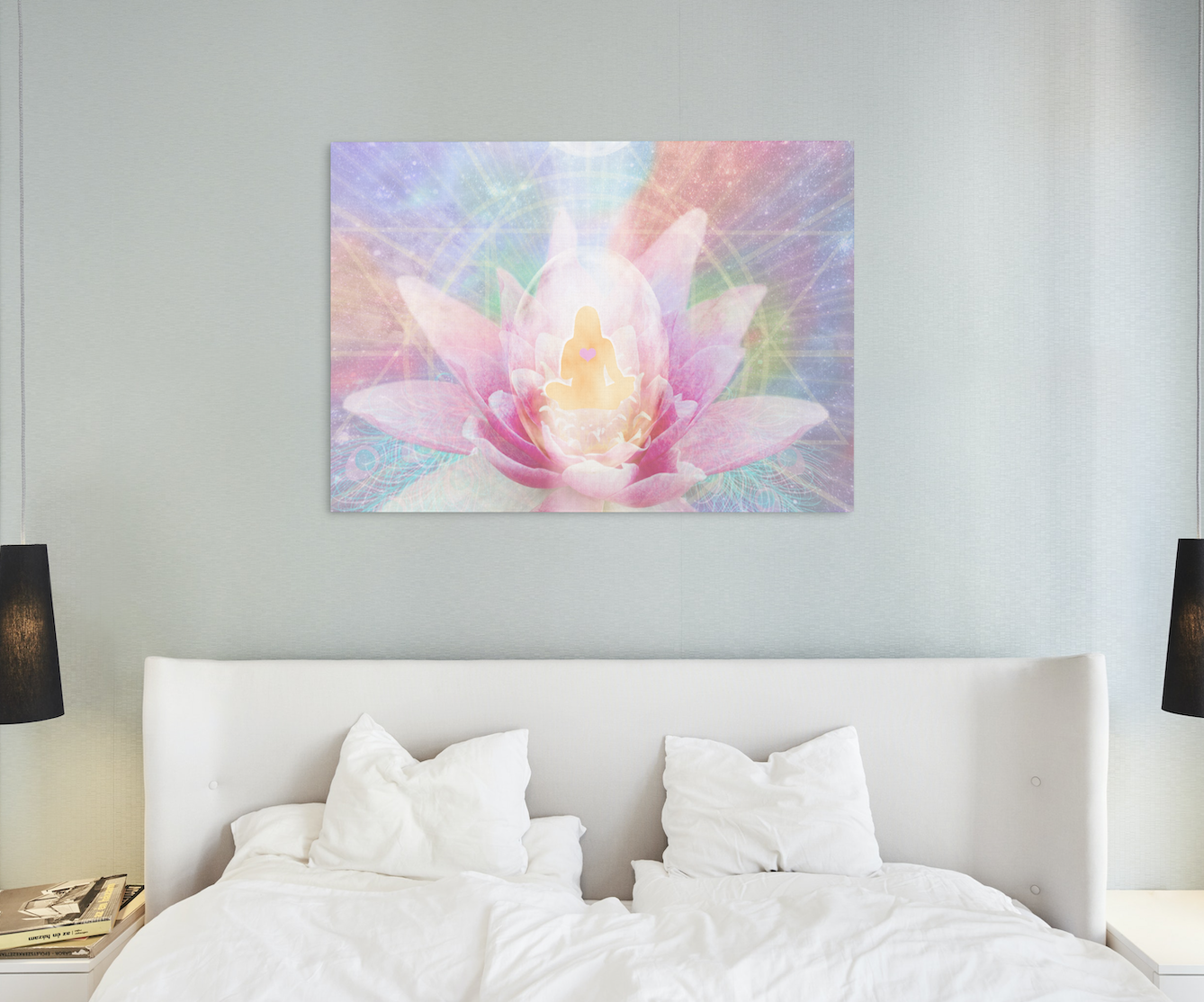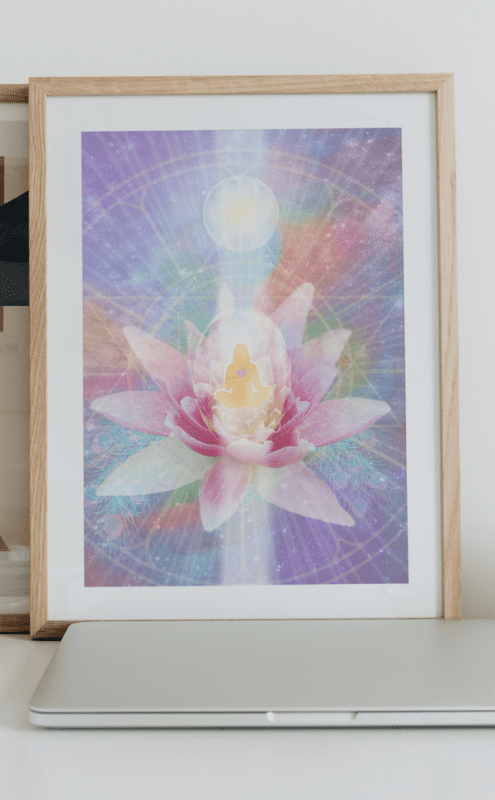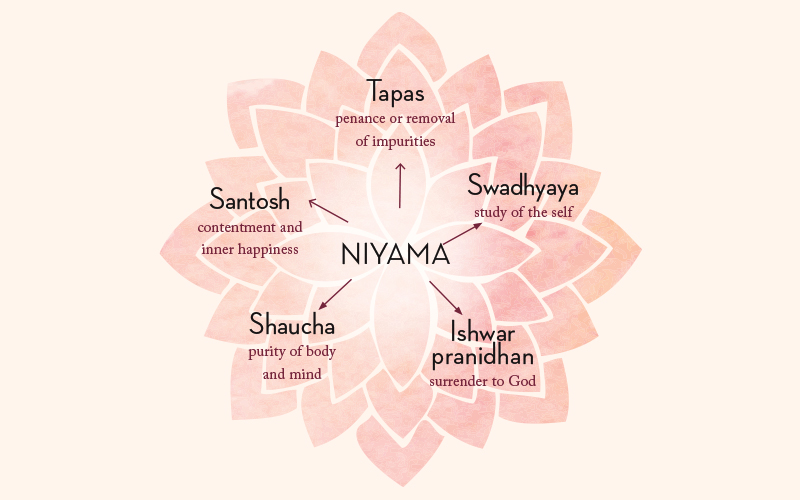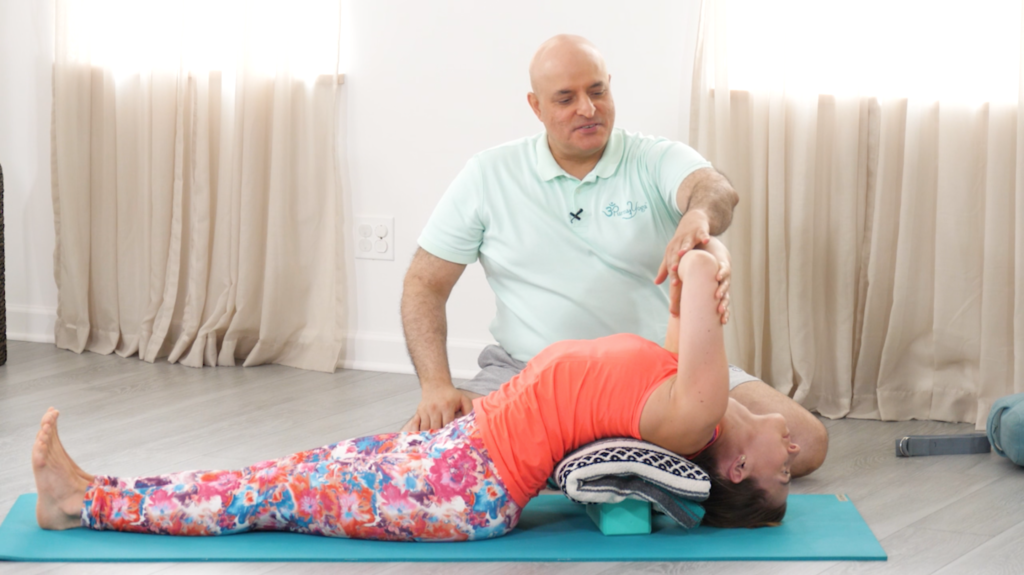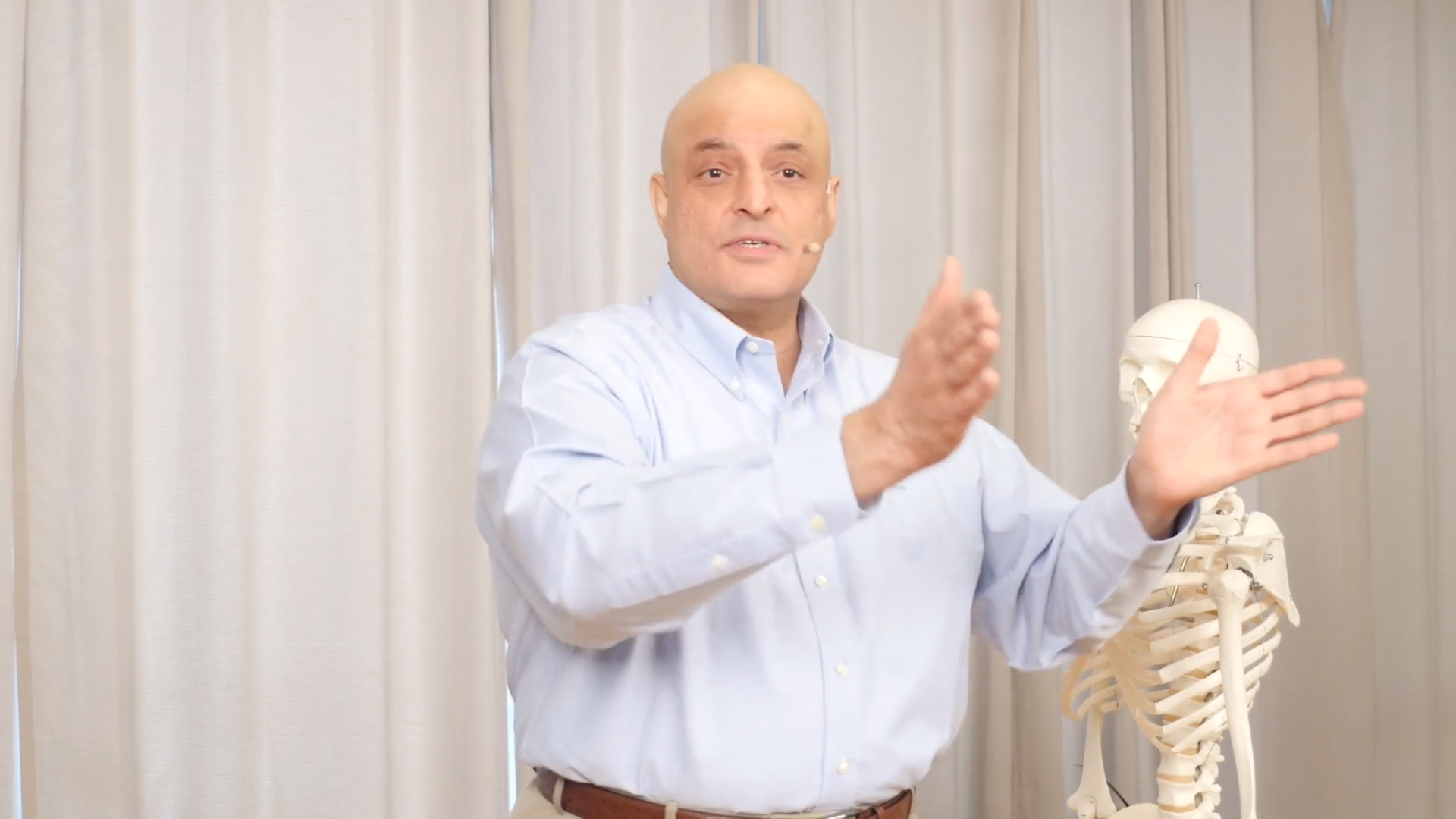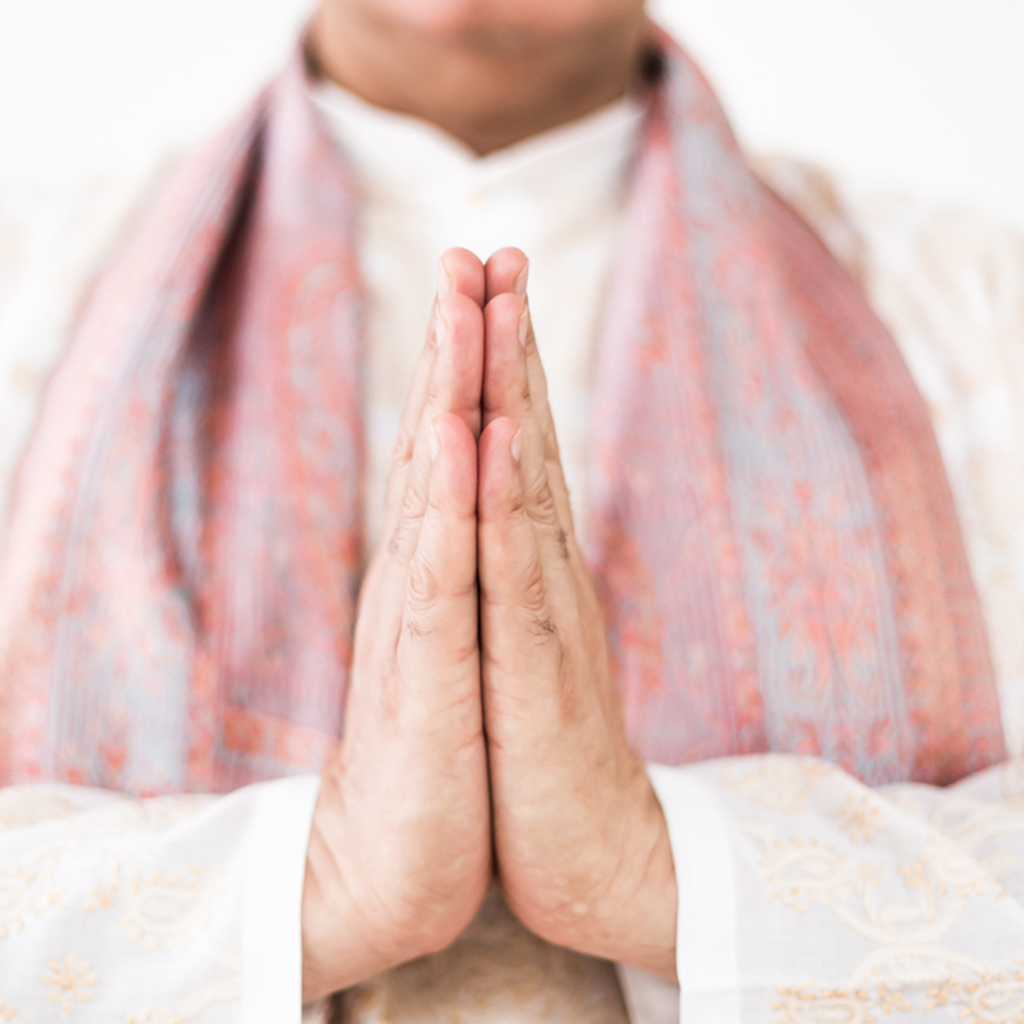The Kleshas: Conquering the Fear of Death (Abhinivesha)
It was a cold night in the Pacific Northwest and my beloved wife, Savitri, was dying. All her systems were failing and doctors had given up all hope. I sat beside her bed, holding her head in my hands. I met Savitri when I was 18 and was instantly captured by her haunting beauty and kind heart. I loved her beyond measure. I was calm on the surface, but deeply shaken inside. She was the only woman I had ever been with. My whole life was her, and it was about to end. So on that evening over 25 years ago when I thought I was about to watch her die, a deep inner fear started to seize me. I prayed. I prayed hard. She could barely speak a word, her breath was failing, her skin was turning blue, and her limbs were as limp as wet rags. Her eyelids were fluttering. I gazed at the beautiful woman who had experienced the death of her entire family before she was 22. Now, was she really going to meet them at 30, in the prime of her youth? No, I thought, and redoubled my efforts to hold on to her tightly. I was convinced I could save her. Then, she took a sharp breath and groaned in a labored whisper. I bent close to her mouth to hear her soft words. In an agonizing attempt to speak, to communicate, she moaned, “Let … me … go. Love … me …, let … me … go.”
Let her go? Wasn’t I the one keeping her alive? My ego was suffering. I was completely averse to the idea of letting go of control. Would she die if I let her go? Did I really know what I was doing? Did I have the correct knowledge? Doubt crept in. I had to replace it with faith. But faith in what? A God who could allow her to suffer so much? I slowly realized that I had no control. Conquering death was beyond my grasp. So, I let go of my ego that held on to her so tightly. Savitri was right. If I loved her, I had to let her go.
With a heavy heart, I took some deep breaths and gently pulled away from her. She was right. I had to let go of my arrogance, my attachment to her. Still sitting beside Savitri’s bed, I waited into the night. Seconds turned to minutes and minutes to hours. With a semi-detached gaze I waited into the night. A slight flicker of her hand, a twitch of her head — it all prompted me to wonder if this was the moment she would leave this world. I watched her lungs carefully to make sure that the breath was moving. Now time stood still and all I could do was wait. And wait. After a tangible eternity, her breath jerked. She was coming back! It was not in a glorious rush, but rather slow and painstaking, one movement after painstaking movement. It took weeks for Savitri to fully return, but she did. It was a marvelous miracle.
A Deep and Personal Lesson About the Kleshas
The obstacles to the path of yoga (kleshas) were taught to me by Savitri during that one night. Avidyā (my ignorance), asmitā (my ego), rāga (my attachment to her), dvesha (my aversion to letting go of her), and abhinivesha (the fear of her death). Since then Savitri has clinically “died” three more times. She has endured the ultimate fear of humans again and again. She has been to the other side. She understands its workings. Over 30 years she has gained incredible awareness of the spiritual worlds.
Savitri has been my greatest teacher, and that night she taught me a deep and personal lesson about the kleshas. The lesson she taught me was that I had to learn to surrender the desire of my ego to make things happen my way. It had to be surrendered to the true owner of the body, the Spirit. Savitri explains that the way to bring the Spirit into the body is to connect with the Pillar of Light, the sushumna. Using Heartfull® Meditation techniques that she had created, such as Mental Centering, she saved her life. Indeed, after I let go, she said that she could connect more freely with her Pillar of Light and her Spirit chose to return to the body. But it had to be her decision. It could not be me deciding for her through my attachment. Powerful lesson.
When I asked her about her experience of nearly dying that night, she told me that the only thing that could keep her alive was her light. What’s more, not only did all of my attachment, fear, and worry do nothing to help the situation, it actually blocked Savitri from uniting with her light, preventing her soul from deciding its story. “The energy of the room needed to be filled with true, genuine love—not with fear and attachment,” she told me. Of course, when it comes to those we love the most, feeling no attachment can be so very difficult to do. My lesson was to love her enough to let her go. In yoga we call it vairagya.
But what was her lesson? She explained: “My lesson was to have no aversion for my body, to have no aversion for life, no aversion for death, no aversion for my sicknesses (dvesha). I had to go into to a place of light and love. To a place of complete surrender where the prayer was, ‘Thy will be done.’ Then only could the Divine and my soul decide whether to keep me alive or to die. I could not have fear of death. I could not have fear of life. Only then could the decision be made. And the decision was: return to your body.” She continued, “Both of us had lessons: to learn what true love is and witness its amazing wisdom.” It is humbling to learn that clinging to another person to keep them alive may actually cause them to die. And, perhaps as importantly, the fear of death, abhinivesha, may actually be its cause.
3 Reasons for the Fear of Death
I believe that there are three reasons for the fear of death. The first is the fear of change. Most of us like the status quo. Death certainly is change. We seldom fear change if we are certain it is going to be better than what we have now. So, subconsciously, we fear death because we are not sure it is going to be better. We are justified in such a fear. We subconsciously know, deep within, that what happens after life is a direct consequence of our thoughts, words, and actions while alive. Are we living upright lives of extraordinary honesty and luminous character? The yogic solution: meditation on attachment to stagnation, meditation to explore what in me fears change. Meditation to release the samskāras that have always tried to be normal, ordinary, and feared change.
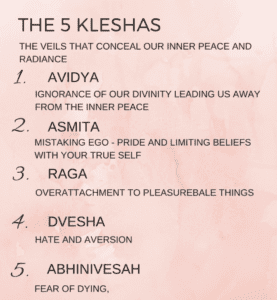
Next is the fear of the unknown. Perhaps the unknown will be more joyous. Perhaps it will be more miserable. I do not know. Therefore I fear it. For most of us, death is unknown. The yogic solution? Meditate on this fear. Ask yourself why you do not trust. Is it not more likely that if I anticipate joy, I am more liable to receive it? Do I not trust the law of attraction which, in yoga, we call karma? What I put forth, I must receive. What am I putting forth? Am I giving enough? Or, do I practice greed? My translation of an old Sanskrit proverb runs thus:
“Though in life we strive with pride to possess The many things that give us sway, All that is left in your cold dead hand Is what you have given away.”
But I must explain to you how all this mistaken idea of denouncing of a pleasure and praising pain was born and I will give you a complete account of the system, and expound the actual teachings of the great explorer of the truth, the master-builder of human happiness. No one rejects, dislikes, or avoids pleasure itself, because it is pleasure, but because those who do not know how to pursue pleasure rationally encounter consequences that are extremely painful.
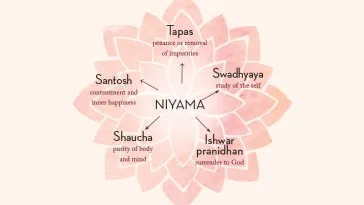
Third is the fear caused by a memory of pain from a similar experience. This is an amazing realization. Surely not everyone fears change and the unknown. Yet Patanjali holds it true that all of us fear death. If this is true, then could it be that the memory of the pain from a similar experience in the past is creating the fear this time around? Perhaps our past lives have not been so clean that our death was a pleasant experience. Perhaps the fear of death is less in those of us who have lived lofty lives filled with kindness and love.
Let us make three resolutions to reduce this pervasive klesha, abhinivesha or the fear of death: First, to get to know ourselves through meditation and live a lofty, honest, egoless life. Second, to open our hearts and love deeply so that there are no regrets. Third, to explore, discover, and live our mission (dharma) in life so that we feel that we are fulfilling the purpose of our Spirit. After all, our fear of death is never so great as our fear of not having fully lived.
About the Author
For nearly 30 years, Aadil Palkhivala has had the reputation of a “teacher of teachers.” Palkhivala began the study of yoga with B.K.S. Iyengar at the age of 7 and was introduced to the Integral Yoga of Sri Aurobindo at the age of 10. When Palkhivala was 20, he embarked on his first teaching tour of Europe and North America. Two years later, Iyengar awarded him the Advanced Yoga Teacher’s Certificate. Palkhivala and his wife, Savitri, are the founders and directors of internationally renowned Alive and Shine Center and Purna Yoga College®, both in Bellevue, Washington. Constantly educating himself in his passion for teaching the “whole yoga,” he is the author of the book Fire of Love . He has studied holistic healing and Ayurveda extensively. He holds degrees in law, physics, and mathematics, is a professional speaker and co-hosted the Alive and Shine Radio Show with Savitri. Today, he is considered one of the finest yoga teachers on earth. Learn more at aadil.com and practice with him at Yoga Journal LIVE! Article posted on the Yoga Journal website, September 16, 2016: http://www.yogajournal.com/yoga-101/kleshas-fear-of-death-abhinivesha/
















